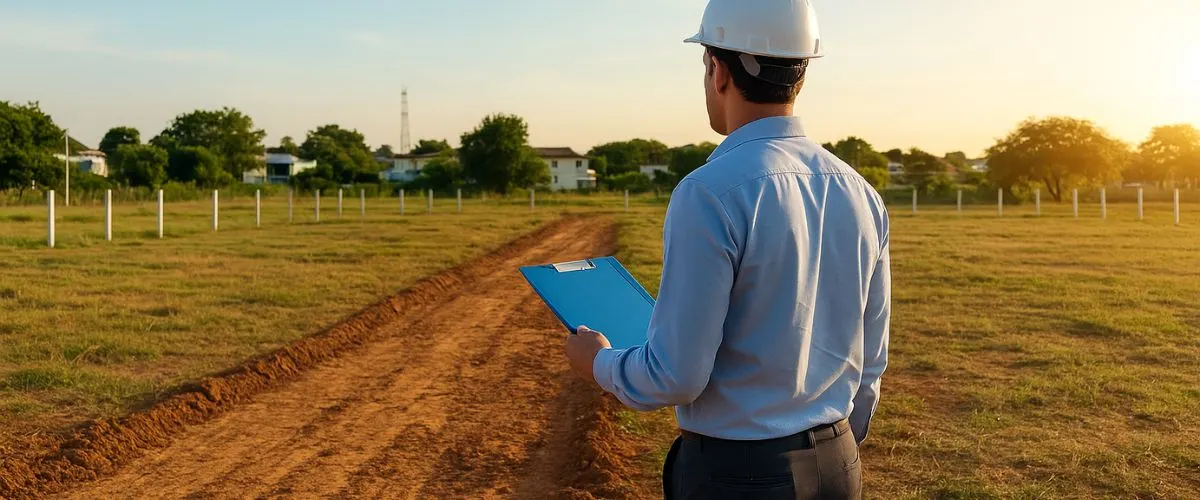How to Invest in Plots in Right Way
Purchasing a plot, whether you want to eventually build your dream home or use the land as an investment can be one of the most satisfying real estate transactions you will ever make. But doing it right is key to success. We think at EstateBull Realtors clear purpose, careful planning and well-thought-out returns make all the difference. Following widely accepted industry advice, then, here is a practical, step-by-step guide to the right way of investing in a piece of land.
1. Define Your Purpose
It begins, she said, by asking yourself: Why am I purchasing this plot?
If you are focused on home building, your list will focus on location, amenities and connectivity, as well as regulatory readiness.
If you are thinking of investment—buy now and sell later—your focus should shift toward appreciation potential, growth corridors and infrastructure momentum.
A clear purpose guides every decision that follows.
2. Choose the Right Location
Location remains paramount. Some key considerations:
- Connectivity & infrastructure: Distance to airport, highway, public transport, schools, hospitals raises future value.
- Growth zone: Regions surrounding a new infrastructure project or developing urbanization are the positions where you can expect to see additional appreciation.
- Amenities & social infrastructure: Proximity to basic amenities makes the plot more usable and easier to sell-off.
- Physical characteristics: Are roads developed? Is the plot’s topography favourable? Impact on building cost and convenience
3. Legal & Regulatory Due Diligence
This is non-negotiable. Omit classifying the style at your own risk — it can be an expensive omission. Here are some basics you should check:
- Title deed /chain of ownership: To make sure the seller is legally able to sell, and the chain has no gap.
- Encumbrance Certificate/ Outstanding Dues: Verifies whether there are any mortgages, liens or legal claims on the plot.
- Land conversion / zoning applications: If the land is agricultural, and you will like to use it for residential, make sure that conversion (change of use) and approval are done.
- Layout approval / plan sanction: In case of plotted developments, the layout should be approved by the appropriate authority.
- Tax payments and civic dues: All the taxes till date should be paid and there should not be any outstanding liability.
- Legal expert consultation: Employ a qualified real-estate lawyer to validate documents and mitigate risks.
4. Financial Planning & Budgeting
A well-structured budget prevents surprises:
- Plot cost + all additional charges: Beyond the quoted price, you will incur stamp duty, registration, legal fees, brokerage, development/maintenance charges.
- Financing options: Some banks finance land purchases, but terms may be stricter than home loans—prepare accordingly.
- Hidden costs: If infrastructure isn’t developed (road, water, drainage), you may bear future development cost or wait for amenities to materialise.
- Resale value vs holding cost: Even if you are buying for investment, treat it like you will hold for some years—calculate carrying cost, expected appreciation, exit plan.
5. Evaluate the Plot Type & Usage
Understanding the nature of the plot helps align expectations:
- Agricultural land: Lower cost, but conversion and usage for non-farming purposes can be time-consuming and may involve regulatory risk.
- Residential plot: Clearer path to building a home. If investment oriented, ensure good location and market demand.
- Commercial/industrial plots: Higher cost and complexity but greater upside if location and zoning support it.
6. Future-Proofing: What to Check Beyond Now
Upcoming infrastructure: Is there a highway extension, metro line, airport or major industrial hub nearby? These are growth triggers.
Neighbourhood trajectory: Are adjacent plots being developed? Is there a planned township, school or hospital being built?
Legal risk of unapproved schemes: Avoid plots sold without required approvals or layout san¬ction.
Accessibility & development status: A plot with poor access (no proper road) or without utility connections might cost more in construction or become difficult to resell.
7. Avoid Common Mistakes
- Don’t skip the legal verification—this remains the top risk.
- Don’t base decision solely on price—cheap plot in a bad location can turn into a dead investment.
- Don’t ignore hidden costs or assume infrastructure will arrive soon—sometimes it doesn’t or gets delayed.
- Don’t purchase from unknown sellers/promoters who can’t provide clear documentation or approvals.
8. The Buying Process – Step by Step
- Clarify why you are buying and what your timeline is.
- Short-list plots based on location, connectivity and growth potential.
- Collect &scrutinise all title/legal documents with your lawyer.
- Negotiate the plot price & prepare financial arrangement.
- Ensure payment of stamp duty, registration of sale deed.
- Take physical possession and ensure mutation of title in your name (revenue/municipal records).
- If for building, seek necessary building plan approvals and start construction accordingly.
Investing in plot land can yield significant rewards when done with diligence, patience and the right partner. Partner with Estatebull Realtors and let us help you make a sound, secure, forward-looking investment.
